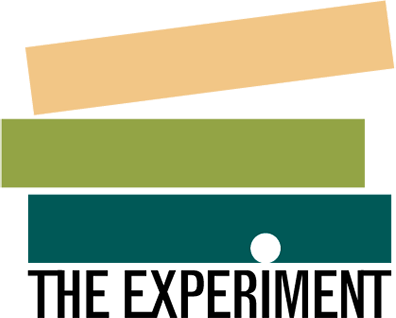 Ah, summertime. With kids on school break and the sun shining bright outside, it’s easy to let your brain take a vacation, too. Luckily, there are fun ways to keep your brain engaged all summer long (and it’s more than just memorizing SAT words!). Ever wondered whether you can drown from drinking too much water? Ask a Science Teacher! Or, if heat rises, why is a mountaintop colder than the bottom? Ask a Science Teacher!
Ah, summertime. With kids on school break and the sun shining bright outside, it’s easy to let your brain take a vacation, too. Luckily, there are fun ways to keep your brain engaged all summer long (and it’s more than just memorizing SAT words!). Ever wondered whether you can drown from drinking too much water? Ask a Science Teacher! Or, if heat rises, why is a mountaintop colder than the bottom? Ask a Science Teacher!
Here’s a little summer schooling from Larry Scheckel, author of Ask A Science Teacher: 250 Answers to Questions You’ve Always Have About How Everyday Stuff Really Works to answer all of those fun questions that come up as we’re enjoying summer break. With 38 years under his belt as a high school physics and aerospace science teacher, he’s the perfect summer instructor.
Goose bumps are small bumps on a person’s skin at the base of body hairs. Tiny muscles at the base of each hair contract and pull the hair erect. The most common type of goose bumps is a response to cold. In addition to getting goosebumps, our bodies respond to cold in several other ways. Shivering increases the amount of heat produced by muscles by a factor of three or four times at peak shivering. As the body’s core temperature drops, the central nervous system also restricts blood flow to the limbs and reroutes some of this blood to the internal organs of the body. The limbs get pale and then turn blue.
Craving that beach glow but no time to sit in the sun? Mr. Scheckel answers whether tanning booths are safe:
The short answer is: no! Tanning is a response to injury and is nature’s way of protecting us, so tanning booths work by causing injury to the skin. Tanning occurs when enzymes stimulate cells in the skin to make melanin, a dark pigment that absorbs ultraviolet (UV) light. The job of melanin is to protect the DNA in the lower layers of skin cells. Melanin is a UV absorbent and acts as an antioxidant.
UV light from the Sun or a tanning booth penetrates the upper layers of the skin and damages the DNA inside skin cells. Repair enzymes are sent to get rid of the injured DNA and aid in making new DNA. Sometimes, because of the damage, these repair efforts go wrong and create cancer.
Experts advise that we don’t spend any time in tanning booths—which the World Health Organization calls a ‘known human carcinogen’—but some sunlight is good for us, even necessary. Sunlight stimulates the production of vitamin D; tanning booths, on the other hand, do little for our vitamin D levels, because they expose us mostly to UVA light, a type of ultraviolet light, and it’s UVB that stimulates vitamin D.
This election season may have you asking: why are some people smarter than others? Mr. Scheckel says…
While most students with high or above-average intellectual skills thrive in schools, many others with equal IQs seem lost in school. This is because there are many different kinds of intelligence. Howard Gardner, a Harvard developmental psychologist, developed a theory of multiple intelligences, including linguistic, logical-mathematical, musical, visual-spatial, bodily-kinesthetic, interpersonal, and intrapersonal.
The ‘nature vs. nurture’ question has been debated for close to 150 years. How much of our ‘smarts’ comes from our DNA—our parents’ genes (nature)—and how much comes from the way we were raised or from our environment (nurture)? Which has more influence on our intelligence? We know that genes hold some degree of influence, but no one knows how much.
A study of forty thousand Dutch children showed that firstborns had a slightly higher IQ than their siblings. One theory is that firstborns tend to get more attention from Mom and Dad, and with more nurturing, they have a better foundation for academic achievement. How children are raised falls into the ‘nurture’ aspect of the nature versus nurture discussion.
An individual’s interests and work ethic can influence intelligence, too. Hardworking people tend to learn more than even very bright-minded but lazy people. And being passionate about a specific topic, say music or art or science, pushes a person’s thirst for knowledge.
There are more factors. Can intelligence depend on wealth and social status? Yes, to some extent. A child who has been taught the importance of education will have a higher desire and motivation to learn than a child who hasn’t. Also, people tend to marry other people with similar kinds of intelligence. Wealth matters, too. Poor families are unable to send a bright kid to college, while wealthy families not only put their kids through college but also hire tutors.
The brain is an organ, but treating it like a muscle can improve its function. The more you exercise it, the better and stronger and more efficient it becomes. So people can become ‘smarter’ and raise their IQ simply by exercising their brain. Conversely, an idle mind tends to lose its abilities. That is why music for young kids is very helpful, and experts recommend reading, writing, crossword puzzles, etc., for senior citizens.
Tossing and turning last night? Mr. Sheckel answers why we have nightmares.
About 3 percent of young adults have frequent nightmares. One in two adults have a nightmare on occasion. An estimated 2 to 8 percent of adults are plagued with frequent nightmares. Stress, depression, and anxiety are commonly associated with nightmares in adults. A major life-changing event can cause them, such as loss of a job, financial worries, marital difficulties, death of a spouse, or moving to another house. Alcohol abuse or abrupt withdrawal from alcohol can also lead to nightmares.
Nightmares occur during the rapid eye movement (REM) phase of sleep. REM is about two hours of a normal night’s sleep, but other phases of sleep break that time up into four or five episodes. REM phases become progressively longer as the night progresses, and so you may find you experience nightmares most often in the early-morning hours of REM sleep. One can have four to five episodes of REM but still usually have nightmares in the later stages of sleep.
Traumatic experiences, such surgery, brain injury, war, and combat, with their attendant post-traumatic stress disorder (PTSD), can bring on nightmares. Stress is thought to be the most common source of nightmares, so relaxation techniques, such as yoga and meditation, have proven helpful. And eating right before going to bed can increase the frequency of nightmares, since eating increases metabolism and brain activity.
Flying somewhere on vacation? Mr. Scheckel answers the question: How do airplanes stay up in the air?
There are two theories of how lift occurs on a wing. Both are correct and both are useful in explaining the forces on an airplane.
The conventional and classic Longer Path explanation uses the Bernoulli effect. The top surface of the wing is more curved than the bottom side. Air traveling over the top of the wing has a greater distance to go—a longer path—than air passing underneath the wing. So the air over the top of the wing must travel faster than the air under the wing. The air passing over the top of the wing and from below the wing must meet behind the wing, otherwise a vacuum would be left in space.
The Bernoulli principle states that faster-moving airflow develops less pressure, while slower-moving air has more pressure. That greater pressure on the bottom of the wing is termed ‘lift.’ Basically, the pressure difference creates an upward suction on the top of the wing.
The competing but complementary theory is based on Isaac Newton’s third law of motion, the law of action and reaction, which states that ‘for every action there is an equal and opposite reaction.’ When air molecules hit the bottom surface of the wing at a glancing angle, they bounce off and are pushed downward. The opposite reaction is the wing’s being pushed upward. Hence, we have lift. It’s similar to BBs hitting a metal plate—they’ll rebound backward. BBs go in one direction and the metal plate goes in the opposite direction.
As it turns out, the Bernoulli Longer Path theory is a better explanation of lift for slower-speed planes, including jet airliners. Newton’s third law is best suited for hypersonic planes that fly high in the thin air at more than five times the speed of sound.
Seeing things?—What is that watery haze above the road in the summertime?
That’s a mirage. It is an actual optical occurrence—not merely an illusion—and shows up in photographs. Mirage comes from the Latin ‘mirare’ meaning to look at or wonder at.
The ‘puddle of water’ on the highway ahead is a common mirage caused by the refraction, or bending, of light rays. As the Sun beats down on the highway, the black surface absorbs heat, the warm air rises and forms a layer of hot air a foot or so deep above the road. The heated roadway keeps the air just above the road several degrees higher than the cooler air above. A nonuniform medium, or mini-inversion, has been created by the heating of the highway and the air just above it.
Light waves travel in a straight line in a uniform medium, but they refract or bend in a medium whose density varies. Light travels faster through less-dense warm air. Any light ray from the distant sky would normally hit the ground. But in this case, the light actually bends in midair because it moves from the cooler, denser air into the hotter, less-dense air right above the ground. The light speeds up in the less dense air, which refracts it upward to your eye.
The puddle of water we see on the road ahead is actually a piece of the sky. The hot road image is the most common type of what is known as an inferior image, that is, one that appears to be lower than the real object. Mirages in the desert occur the same way. Light is refracted when it travels through different densities of air or water. But if the angle at which light strikes any surface, such as water or glass, is too large, total reflection takes place.
The angle at which light is totally reflected is called the critical angle, and it causes the surface of water or glass to act like a mirror. Hot air reflects light from the sky up to our eye, which is why we don’t see the mirage or puddle right in front of us but farther ahead. In fact, while the mirage may look like a puddle, what we are actually seeing is light from the sky. If you look carefully, you can sometimes see a fluffy white cumulus cloud in the puddle. If we look out our car windshield, we can see the clouds in the sky ahead of us. But we also seem to see pieces of that same cloud in the roadway ahead. We can mentally trace a single light ray from the cloud. The ray travels at an angle to the highway ahead of our car, hits the less dense air above the roadbed, travels nearly horizontally for a bit, then bends upward to our driver eye. The bending is continual and gradual because the air temperature changes are gradual.
These questions and answers have been excerpted from Ask A Science Teacher: the perfect book for a curious child whose appetite for learning persists in the summertime—or anyone with questions about how the world works! Learn more about Ask A Science Teacher here.




